Effects of cyanide fishing
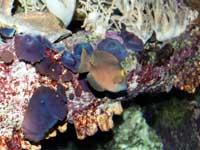
There are many fish catch systems. They are all harmful, but the damage some may cause becomes immense. Just ask the Basque fishermen. However, at sea there is a worse habit or system than pelagic fishing. One of them is definitely fishing with explosives.
This totally prohibited fishing system affects not only the fish, but everything that surrounds them. In the reefs of the tropical seas it is usually fishing this way. As a result, reef coral is damaged, sea stars, clams, snails die… in short, life in reefs dies.
If the fishing caused by the explosion is destructive, for the reefs of the tropical seas the use of cyanide is becoming even more destructive for fishing. This is a very used fishing technique. The technique has no difficulty. Divers descend to reefs and disperse cyanide in the slits. Fish, unable to breathe, grow — of course, the rest of the reef's living beings die. Fishermen, through nets, collect all the fish that reach the water. They are then deposited in plastic containers filled with water. Most of them don't survive, but it doesn't matter, although only a few remain trapped, fishing is profitable.
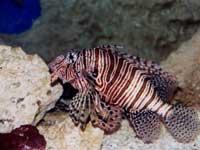
Some of the surviving fish are taken to expensive restaurants in Europe, the United States or Asia so that their menus have fresh fish, while the rest are sent to private aquariums of rich people to be exposed. Undoubtedly, the use of these fishing techniques is causing the fate of tropical fish to be unfortunate, but that of the reefs is not being better. In fact, explosions or cyanide destroy coral reef ecosystems.
Cyanide kills all animals and plants, especially corals, especially cyanide sensitive. The show is disappointing. As trying to escape the action of cyanide, corals release the mucous membrane and die shortly after. In the long run the situation is even more painful, because coral needs many years to grow. According to experts, the largest coral heads can be about 100 years old. Therefore, even if cyanide fishing was stopped at this very moment, the descendants could not see a kind of corals like the current ones.
Expert Roger Payne works on the Oddisey research sailboat. He is currently in the area of Guinea. He tells what is happening in the tropical seas: "I met a person who used this fishing technique and had the opportunity to talk to her. He did not use cyanides, but chlorine.
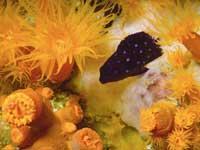
Then I was working in Hawaii and one of the project partners was the diver. He worked a lot in the Hawaii area until he started fishing tropical reef fish to fill his pocket. For the Japanese living in the Hawaii area, this type of fish is a whim and he said he could sell everything they wanted.
He went down to the coral reefs with a perfumer full of chlorine. When he saw fish, he led them to the reefs to hide. He approached and activated the perfumer and sent the chlorine to the cracks of the reefs.
After a few minutes, he collected the fish that were half asleep. He realized that he was killing reefs, as in reefs where there is currently only one dead coral was fisherman. He confessed that to find fish he had to move around the reefs around Hawaii, because in order for fish to survive they need a healthy coral.
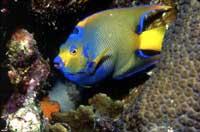
When I met her, that man had been using this fishing technique for half a dozen years, and had traveled almost the entire island. Even if it seems incredible, that man and two of his companions destroyed more than 300 kilometers of reefs. He no longer lives in Hawaii, as he found in Florida a job he earned more with less danger."
Changing ex officio is nothing surprising. In fact, in the vicinity of Hawaii you can no longer practice this type of fishing, at least profitably, since most of the reefs in the area are semi-dead. However, for reefs these are not good times. This diver changed his craft, but others do. The problem is that they are no longer in Hawaii, they have gone elsewhere.
The UN also concerned
The globalization of coral reef problems is an increasingly evident reality. The UN itself, in its latest environmental report, has made it public. Coral Reef Atlasa has concluded that one-third of the world's reefs are in danger.
The surface of coral reefs in the world is 284,300 square kilometers spread across 101 countries. According to the report, coral reefs are less than expected and are endangered by human activity and the greenhouse effect. According to the report, coral reefs are important for humans, as a quarter of marine species live in these types of areas and components for the manufacture of certain drugs leave these types of sites. For example, the components of TR anti-AIDS medication and some of the products used in cancer research are obtained in coral reefs.
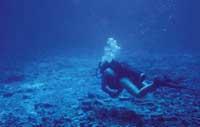
The speed of destruction is being dizzying and, in the name of quick business, man again lifts stones to his roof. In fact, according to experts, a healthy reef can provide 15 million tons of fish and seafood per square kilometer annually, which means enough food for 2,500 people. And not only that, in many countries reefs are needed to attract tourism, strengthen fishing and protect the coast from erosion and storms. There are few reasons to take a little more care of coral.
Global destruction
The account of the lines next to Roger Payne generates incapacitation and anger. But Hawaii is not the only case. Perhaps the situation in the Philippines is worse.
Local authorities believe that about 3,000 people in the Philippines use cyanide to fish. It is considered that each of them will kill about 50 coral heads daily. It is said that they work 255 days a year, so it is seen that 34 million coral heads multiply and die each year. Sure, that in a single year, but in the Philippines cyanide fishing began in 1950. The estimate is not direct, since from the beginning no 3,000 people were engaged in fishing cyanide. In any case, experts consider that coral heads killed by cyanide use can be about a trillion.
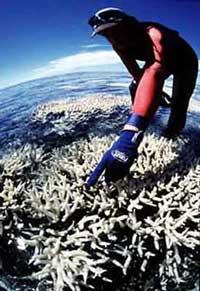
Due to trade in live fish for aquariums or restaurants, most Philippine coral is dead. For many years the main sources of tropical fish have been the Philippines. Tropical fish present in most aquariums in the world are caught in the Philippines. But that is over, their reefs are not able to respond to demand, they are exhausted. For this reason, the live fish market today is not in the hands of the Philippines, there are others who compete: Indonesia, Sri Lanka, the Maldives, Micronesia… In all these places we are working with the fishing technique they have used for many years in the Philippines, cyanide.
However, these countries may also soon lose their leadership. For example, 80% of Indonesia's coral reefs are already damaged for the same reason by the use of explosives in fishing. The situation in Thailand is not better, but we must add to the bad fishing techniques the pressure that tourism is exerting in the environment, since too many hotels are being built and dirt begins to reach the sea in tons. It is clear that the reefs of these countries will soon be killed.
Published in the supplement Natura de Gara.
Buletina
Bidali zure helbide elektronikoa eta jaso asteroko buletina zure sarrera-ontzian











